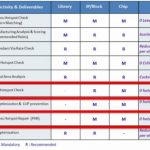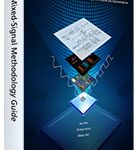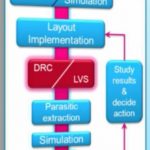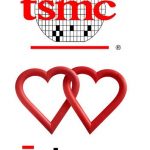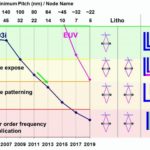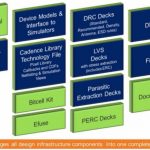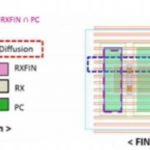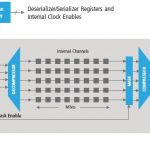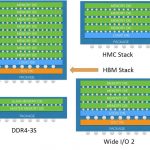While FinFET yield controversy is going on, I see a lot being done to improve that yield by various means. One prime trend today, it must be, it’s worthwhile, is to pull up various signoffs as early as possible during the design cycle. And DFM signoff is a must with respect to yield of fabrication. This reminds me about my patents filed… Read More
Cadence Mixed Signal Technology Forum
Yesterday was Cadence’s annual mixed-signal technology forum. I think that there was a definite theme running through many of the presentations, namely that wireless communication of one kind or another is on a sharp rise with more and more devices needing to connect to WiFi, Bluetooth and so on. This was most obvious during… Read More
How ST Designs with Layout Dependent Effects (LDE)
I first visited STat their Agrate, Italy site where Flash memory development is done. At DACthis year Antonio Bogani talked about how ST designs with LDE while using EDA tools and a PDK (Process Design Kit) from Cadence. They recorded the 17 minute presentation, and you can view it herewithout having to register. Antonio’s… Read More
TSMC ♥ Cadence!
One of the questions I routinely ask amongst the fabless semiconductor ecosystem is, “How are the EDA vendors doing?” There are always complaints because, let’s face it, we all like to complain. On occasion however I do hear about a vendor who goes above and beyond the call of duty and it really brightens my day.
Of late,… Read More
10nm, the View from IBM
On the Cadence booth at DAC, Lars Liebmann of IBM presented on the challenges of 10nm. As he put it, how the lithography folks are keeping things very interesting for the EDA tool development engineers. Although 14nm/16nm hasn’t yet ramped into HVM, the advanced work for tools and IP has all moved to 10nm. Although Lars gave… Read More
Key Collaboration to Enable Designs at Advanced Nodes
In the semiconductor ecosystem, several partners (or better to say stakeholders) join together in the overall value chain to finally output the most coveted chip, err I should say SoC these days. It becomes really interesting when we start analyzing the real value added by each of them, none appears to be less. Well, then to whom … Read More
Samsung 14nm FinFET Design with Cadence Tools
The first consumer products with 20nm processing are arriving in 2014 like the 2 billion transistor A8 chip in the iPhone 6, however at the 14nm node there are new designs underway to continue the trend of Moore’s Law. To get a better feel for the challenges of designing with 14nm FinFET technology I watched a 23 minute video … Read More
SmartScan Addresses Test Challenges of SoCs
With advancement of semiconductor technologies, ever increasing sizes of SoCs bank on higher densities of design rather than giving any leeway towards increasing chip area and package sizes; a phenomenon often overlooked. The result is – larger designs with lesser number of pins bonded out of ever shrinking package sizes;… Read More
Cadence white paper helps you selecting what come after DDR4
The DRAM market is shaking… In 2014, analysts predict that LPDDR4 will surpass DDR4 for the first time. When releasing DDR4 standard, JEDEC has clearly stated that the industry should not expect any DDR5. Does this means that DRAM technology new development is ending with DDR4? According with Mike Howard, principal analyst at … Read More
Cadence and Reverse Debugging
I wrote back in March about Undo Software. They have a reverse debugging solution called UndoDB (the DB is for debug, not database). I have a soft spot for reverse debugging ever since seeing one of the engineers at Virtutech type reverse single step and seeing the code back up a single instruction and realizing that literally months… Read More

